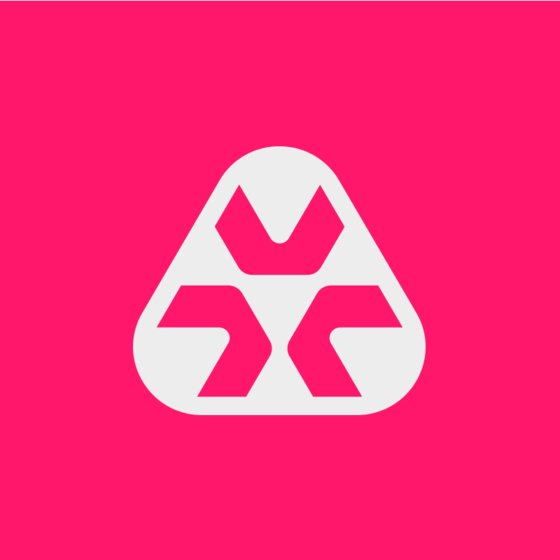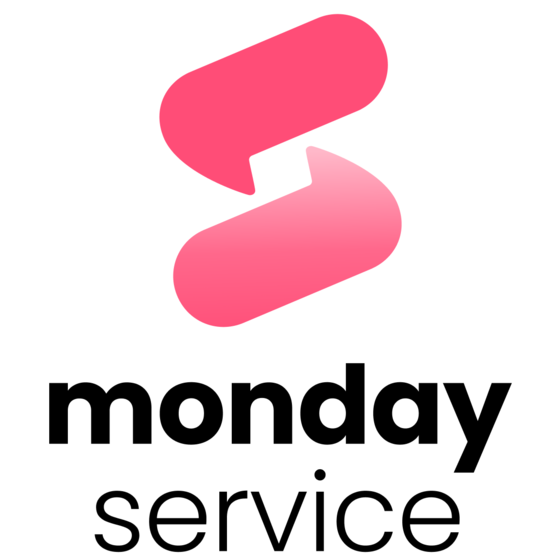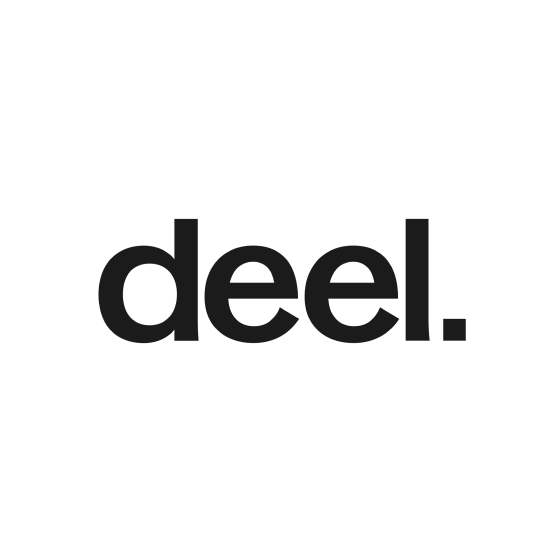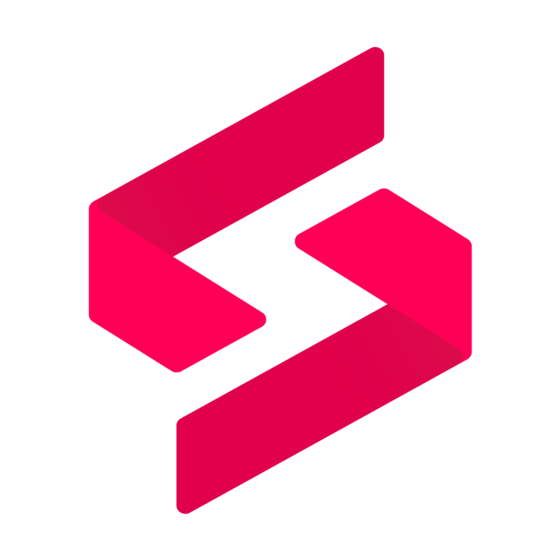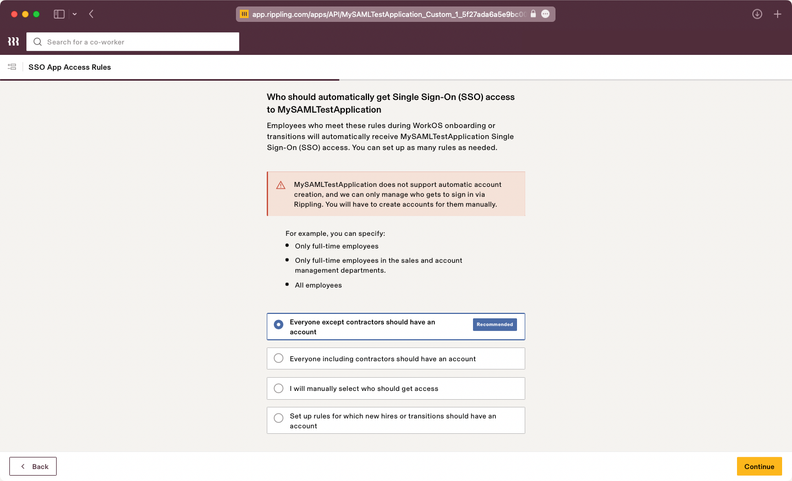Best IT Management Software Shortlist
Here are the IT management software I’ve shortlisted, along with which scenario I found they excelled in:
Our one-on-one guidance will help you find the perfect fit.
IT management software helps teams monitor systems, handle support tasks, and keep infrastructure running without constant manual effort.
Most teams start exploring these tools when systems are stretched thin, response times lag, or recurring problems start disrupting users and slowing down business operations. Without something in place to coordinate updates, track issues, and stay ahead of risks, small problems can quickly become big distractions.
I’ve worked with IT departments in different industries to choose and implement tools that support day-to-day management while helping teams respond faster and plan better. This guide is based on those experiences and is here to help you find a solution that fits how your team works.
Why Trust Our IT Management Software Reviews?
We’ve been testing and reviewing IT management software since 2023. As IT specialists ourselves, we know how critical and difficult it is to make the right decision when selecting software.
We invest in deep research to help our audience make better software purchasing decisions. We’ve tested more than 2,000 tools for different IT use cases and written over 1,000 comprehensive software reviews. Learn how we stay transparent & our hybrid cloud solution review methodology.
Best IT Management Software Summary
| Tool | Best For | Trial Info | Price | ||
|---|---|---|---|---|---|
| 1 | Best for real-time device monitoring | Free trial available | From $149/technician/month (billed annually) | Website | |
| 2 | Best for all-in-one customizable, visually appealing dashboards | Free trial available | From $26/seat/month (3 seat minimum) | Website | |
| 3 | Best for global IT asset management | Free trial + demo available | From $29/month | Website | |
| 4 | Best for AI-driven MSP growth | Free trial available | From $79/license/month (billed annually) | Website | |
| 5 | Best for employee device management | Free trial available | From $8/user/month (billed annually) | Website | |
| 6 | Best for Active Directory management | 30-day free trial | From $7/user/month (min 5 seats) | Website | |
| 7 | Best for unified SaaS and device management | Free demo available | Pricing upon request | Website | |
| 8 | Best for full stack observability | Free demo available | Pricing upon request | Website | |
| 9 | Best for IT service management | 30-day free trial available | From $0.21/node/month (billed annually) | Website | |
| 10 | Best for automated service discovery | Free trial available | Pricing upon request | Website | |
| 11 | Best for MSPs managing multiple accounts | Free demo available | Pricing upon request | Website | |
| 12 | Best for multi-platform monitoring | Free trial + demo available | Pricing upon request | Website |
-

Docker
Visit WebsiteThis is an aggregated rating for this tool including ratings from Crozdesk users and ratings from other sites.4.6 -

Pulumi
Visit WebsiteThis is an aggregated rating for this tool including ratings from Crozdesk users and ratings from other sites.4.8 -

GitHub Actions
Visit Website
Best IT Management Software Reviews
Below are brief but detailed looks into the best tools I found during my tests, with information on their strengths, weaknesses, and pricing information to help you compare them.
Atera is an IT management software designed to assist CTOs and IT managers in overseeing and optimizing their IT operations. It offers a suite of tools that aim to simplify the complex tasks associated with IT management.
Why I Picked Atera: I chose Atera because of its remote monitoring and management capabilities. This feature lets you keep an eye on all your devices in real-time, which is helpful for maintaining system health and preventing potential issues. Its automation capabilities also allow you to automate routine tasks, freeing up time for more strategic initiatives.
Another reason Atera stands out is its integrated helpdesk and ticketing system. This feature ensures that your team can efficiently manage support requests and track issues until they're resolved. It helps in maintaining a smooth workflow and ensures that no ticket is left unattended.
Atera Service Standout Features and Integrations
Features include network discovery, which helps you identify all devices connected to your network, ensuring nothing goes unnoticed. Patch management is another valuable feature, automatically keeping your software up to date with the latest security patches. Real-time alerts notify you about any system anomalies, allowing you to address issues before they escalate.
Integrations include NetSuite, Salesforce, HubSpot, Slack, Microsoft Dynamics CRM, Microsoft Teams, Zendesk, Jira Software Cloud, Okta, Acronis Cyber Protect Cloud, Azure Active Directory, and Microsoft Outlook.
Pros and cons
Pros:
- User-friendly interface and intuitive features
- Robust remote access for secure connections on-the-go
- The real-time alert system notifies users of system anomalies for quick action
Cons:
- Slight learning curve
- Some users find the reporting system lacking in depth and customization
Best for all-in-one customizable, visually appealing dashboards
monday Service is an advanced platform designed to manage and coordinate service operations across various departments, including IT, HR, legal, and procurement. It is part of the broader monday.com suite, offering features such as ticket management, multi-channel support, and customizable, code-free automations.
Why I Picked monday Service: monday Service offers a comprehensive suite of features that support IT management as well as excellent project management tools, including Kanban boards, Gantt charts, and timelines, which are vital for tracking the progress of various IT projects and ensuring they stay on schedule. The ability to visualize tasks and timelines helps in better planning and resource allocation, which is critical for a CTO overseeing multiple projects. monday Service also provides visual project tracking and real-time data monitoring to provide better oversight and faster decision-making.
monday Service Standout Features and Integrations
Features include automations for repetitive tasks and workflows, work management capabilities, customizable dashboards, time tracking capabilities, reports and insights, mobile access, and advanced encryption standards for data security.
Integrations include DocuSign, Gmail, Azure DevOPs, Microsoft Teams, Microsoft Outlook, and Slack.
Pros and cons
Pros:
- Real-time data and reporting
- Comprehensive collaborative features
- Customizable workflows
Cons:
- Some customer support delays
- Limited functionalities on mobile app
New Product Updates from monday service
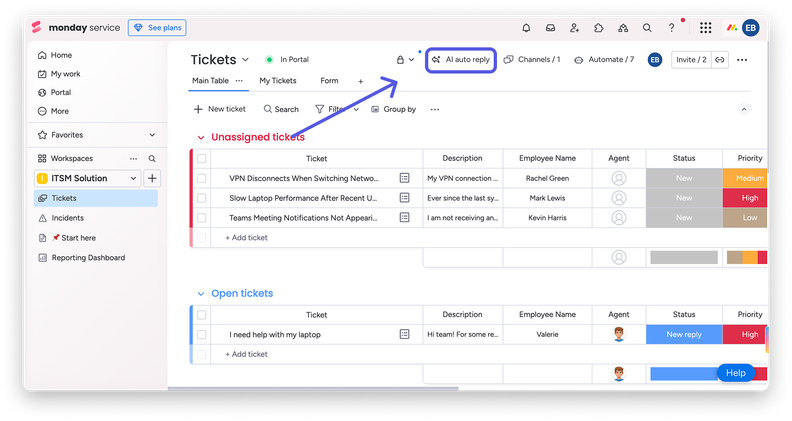
AI Copilot Enhances Ticket Resolution
The Monday service update introduces an AI copilot to auto-resolve tickets by responding to routine requests using past resolutions, with user-controlled confidence levels. For more details, visit monday.com/whats-new.
Deel is a comprehensive global platform designed to simplify and automate workforce management. Known primarily for its expertise in global workforce solutions, including payroll, HR, and compliance, Deel has expanded its offerings to include a comprehensive suite of IT management capabilities. Deel IT enables organizations to manage their IT infrastructure, providing end-to-end support for hardware procurement, deployment, maintenance, and recovery.
Why I Picked Deel: Deel IT stands out as an IT management software, particularly for businesses that need to manage IT assets globally. While its focus is primarily on asset management, Deel IT excels in this domain with a range of features tailored for global operations. It offers the ability to deliver equipment to 130+ countries with support for local compliance and customs. It also offers real-time visibility over all IT assets, automated device setup, security with MDM and endpoint protection, and 24/7 global support.
Deel Standout Features and Integrations
Features include flexible equipment procurement, centralized device management, rapid device deployment, customizable IT policies and permissions, global SLA-backed repairs, automated device refresh and upgrades, certified data erasure, and device recovery and reuse.
Integrations include Slack, Google Workspace, Microsoft Teams, BambooHR, Greenhouse, SAP SuccessFactors, Okta, and Azure Active Directory.
Pros and cons
Pros:
- Supports device management in over 130 countries
- Helps automate asset-related workflows
- Can combine HR and IT asset management in one
Cons:
- May not be ideal for teams with very complex IT asset needs
- Does not offer features for other major IT components, like servers and networks
New Product Updates from Deel
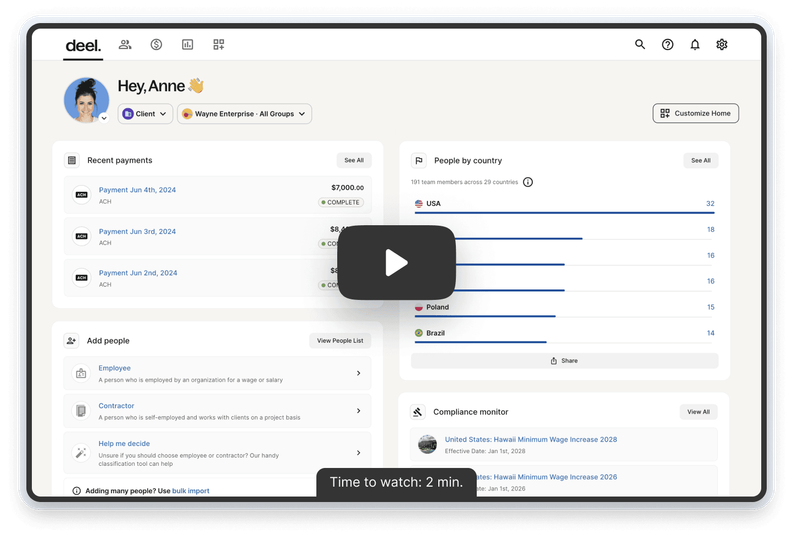
500+ New Platform Enhancements for Global Hiring and Payroll
Deel announced over 500 platform enhancements focusing on global hiring, HR, payroll, and AI-driven compliance, featuring tools for faster hiring, smarter HR management, strategic planning, and enhanced payroll flexibility. For more details, visit the source: Deel Blog.
SuperOps AI is an AI-powered PSA-RMM platform designed for fast-growing Managed Service Providers (MSPs), offering a unified solution that includes Professional Services Automation (PSA), Remote Monitoring and Management (RMM), IT documentation, and project management. It aims to serve as the ultimate MSP Blueprint for SuperGrowth by providing a single pane of glass for MSPs to manage their operations effectively, leveraging artificial intelligence to support growth and potential realization.
Why I Picked SuperOps: SuperOps excels in providing a unified IT management solution that combines remote monitoring and management with proactive network monitoring. Its strengths lie in easy setup, real-time visibility, seamless third-party integrations, and upcoming features aimed at enhancing network efficiency. This approach simplifies IT operations for Managed Service Providers, enabling them to manage and monitor IT infrastructure effectively.
SuperOps Standout Features and Integrations
Features include tools for project management, time tracking, and client invoicing, aiming to improve business operation efficiency. The RMM feature allows for remote monitoring and management of IT assets, providing real-time alerts and maintenance automation. Additionally, the platform offers centralized IT documentation storage, project management capabilities, and AI-powered automation for task handling and data analysis.
Integrations include Xero, QuickBooks Online, QuickBooks Desktop, Splashtop, TeamViewer, Webroot, Bitdefender, SentinelOne, Pax8, Hudu, and Azure Active Directory (AD).
Pros and cons
Pros:
- Offers native integrations with popular third-party software, enhancing functionality
- Easy to use with a simple setup process, reducing the learning curve for new users
- Unified platform that integrates network monitoring with RMM, streamlining IT operations
Cons:
- Limited information on customization options for specific MSP needs
- As a relatively new player, may lack some advanced features found in established competitors
Rippling is a workforce management platform with tools for finance, HR, and IT departments, including a module for app and device management.
Why I picked Rippling: Rippling provides several useful features for securing employees’ work devices and the data they handle. In my evaluation, I found I could encrypt drives, enforce updates, lock and wipe stolen or lost devices, and implement two-factor authentication.
Rippling standout features and integrations:
Features that made me recommend Rippling for employee device management include the ability to configure profiles based on factors such as location and role. The profiles could include custom installation packages as well as credentials for connecting to wireless networks, VPNs, and other devices.
Integrations are pre-built for Zoom, Slack, Dropbox, Apple Business, LastPass, Dashlane Business, Xero, Quickbooks Online, Stripe, and NetSuite.
Pros and cons
Pros:
- Good user provisioning and de-provisioning
- Provides other solutions such as HR and finance tools
- The company can manage the hardware on your behalf
Cons:
- Set up may take time
- Not all features may be necessary for smaller operations
New Product Updates from Rippling IT
Assign Identity Providers by Team with Rippling IT
Rippling IT now allows assigning specific identity providers like Okta and Entra ID to different teams, with Rippling’s SSO as a backup for instant rollbacks. More details at Rippling Blog.
ManageEngine ADManager Plus is a robust, web-based Active Directory (AD) management and reporting solution designed to simplify and streamline the management of AD tasks. It provides IT administrators with the tools necessary to automate routine AD tasks, generate detailed reports, and ensure compliance with organizational policies, making it an indispensable part of any IT management toolkit.
Why I Picked ManageEngine ADManager Plus: I like that the software focuses on Active Directory management, offering tools and functionalities that enhance AD operations. Its ability to handle bulk user management, automate AD tasks, and generate over 150 pre-built reports makes it a powerful asset for any organization, IT administrator, or helpdesk technician.
ManageEngine ADManager Plus Standout Features and Integrations
Features include custom reports, scheduled reports, workflow automation, role-based access control, self-service password reset, account unlock capabilities, and Active Directory cleanup.
Integrations include ServiceDesk Plus, Microsoft Exchange, Office 365, Google Workspace, Skype for Business, and Zendesk.
Pros and cons
Pros:
- Easy to install and set up
- Offers useful reporting features
- Allows centralized management of organization resources
Cons:
- The GUI could be more polished
- Automation features may not work effectively for all users
Josys is an IT management platform designed to help manage both SaaS applications and hardware devices, offering a holistic view and control over an organization’s entire IT infrastructure.
Why I picked Josys: Josys stands for its unique capability to unify SaaS and device management within a single platform. This unified approach allows organizations to gain visibility and control over all their IT assets, simplifying the management process and reducing the complexity associated with juggling multiple tools. Josys also excels in providing detailed insights into asset utilization, enabling IT managers to optimize resource allocation and identify underutilized assets.
Josys standout features and integrations:
Features include automated workflows, real-time monitoring, and a real-time dashboard, which provides comprehensive visibility and monitoring of all IT assets. Josys also includes robust compliance management tools that help organizations stay compliant with industry regulations and standards.
Integrations include Microsoft Azure, Google Workspace, Salesforce, ServiceNow, Slack, Okta, Dropbox, Box, Zoom, BambooHR, HubSpot, and AWS.
Pros and cons
Pros:
- Centralized SaaS management
- Ability to inventory IT devices in real time
- Intuitive user interface
Cons:
- May not be suitable for businesses with more complex IT needs
- Customization is limited
ManageEngine OPM Plus is an IT management software designed to help organizations efficiently oversee their IT environments with monitoring, real-time insights, and management, supporting both cloud-based and on-premises infrastructures. Its primary goal is to deliver full-stack observability while simplifying the complicated nature of IT management.
Why I picked ManageEngine OPM Plus: This platform provides a comprehensive suite of tools for IT analytics, service management, endpoint management, and identity and access management. These tools help cover crucial aspects of IT management, such as cost management, compliance, and security, while also offering tools for orchestration, automation, and monitoring for smoother operations.
ManageEngine OPM Plus Standout Features and Integrations:
Features that stand out include its capability for real-time monitoring of applications, servers, and network devices, advanced tools for reporting and analytics, options for automation and customization, and a broad range of IT management functionalities. For example, it delivers detailed visibility into the performance, availability, and overall health of an organization's IT infrastructure, along with proactive IP address tracking, log monitoring, bandwidth monitoring, change monitoring, and infrastructure prioritization.
Integrations include Network Configuration Manager, Firewall Analyzer, Analytics Plus, AlarmsOne, ServiceDesk Plus, ServiceDesk Plus Cloud, ServiceDesk Plus MSP, ServiceNow, Jira Service Management, Slack, MS Teams, Webhook, REST API, OpManager, Applications Manager, NetFlow Analyzer, OpUtils, RMM Central, and Endpoint Central MSP.
Pros and cons
Pros:
- In-depth view of entire IT infrastructure
- Instant notifications and alerts
- Supports IT scaling
Cons:
- Configuring alarms can be challenging
- May have an initial learning curve for new users
InvGate Service Management is an IT service management (ITSM) solution designed to enhance your organization's IT operations. It offers tools for managing incidents, problems, changes, and services, aiming to improve efficiency and service delivery.
Why I Picked InvGate Service Management: When you're managing IT operations, the ticket management feature of InvGate Service Desk helps your team organize tasks based on urgency and service level agreements (SLAs). This feature enhances collaboration by making sure everyone knows what to prioritize. I also like that you can customize and share performance dashboards, offering transparency into your service desk's status. With over 150 metrics for cross-analysis, your team can create detailed reports to make informed decisions and improve service.
InvGate Service Management Standout Features and Integrations
Features include problem management, change management, service catalog, self-service portal, IT asset management, SLA management, gamification, multiple department support, automation, customizable dashboards, reporting, and AI capabilities.
Integrations include FileWave, Lansweeper, Microsoft Teams, Microsoft ActiveDirectory, Azure DevOps, Okta, Office 365, OpenAI, Outlook, and Jira.
Pros and cons
Pros:
- Rule-based SLA configuration for tracking performance metrics
- Incorporates AI and low-code automation
- Provides a robust platform for incident management
Cons:
- Could offer more native integrations
- No social media ticket creation support
Checkmk is an IT monitoring platform that helps you oversee your entire IT infrastructure, from servers and networks to cloud services and applications.
Why I picked Checkmk: One reason I like Checkmk is its automated service discovery. Once deployed, it automatically identifies the services running on your hosts, saving you time and reducing manual configuration efforts. This feature ensures that your monitoring setup stays current, even as your infrastructure evolves. Another advantage is Checkmk's rule-based configuration. This approach allows you to define monitoring rules that apply across your infrastructure, ensuring consistency and simplifying management.
Checkmk standout features and integrations:
Features include auto-registration of hosts, granular access control, REST API for automation, 2FA security, pre-defined alert thresholds, time-series analysis, historical data review, custom dashboards, business intelligence insights, application dependency mapping, service aggregation, and real-time insights.
Integrations include APC, Brocade, Cisco Systems, Dell, Fujitsu, Hewlett Packard Enterprise (HPE), IBM, Microsoft Azure, Amazon Web Services (AWS), VMware ESX, Kubernetes, and Docker.
Pros and cons
Pros:
- Scalable for small and large IT environments
- Range of automations
- Monitors a wide range of devices and applications
Cons:
- Auto-registration of hosts only available on higher-tier plans
- Initial configuration can be complex
ManageEngine RMM Central is a comprehensive remote monitoring and management (RMM) tool designed specifically for Managed Service Providers (MSPs) to provide all-in-one IT management solutions across multiple accounts. The software is designed to manage a range of devices and applications from a centralized platform, and it offers a range of features including network discovery, device monitoring, server management, and real-time alerting.
Why I Picked ManageEngine RMM Central: Aside from its comprehensive capabilities in unifying IT management tasks, this software offers robust features such as diverse discovery options, simplified application management, and extensive network monitoring, which are essential for managing complex IT environments. Additionally, the platform automates routine maintenance tasks, such as updates, backups, and system diagnostics, to free up human IT resources.
ManageEngine RMM Central Standout Features and Integrations
Features include patch management, remote control, asset management, power management, software deployment, and collaborative sessions. Additionally, the platform offers integrated chat with end users for troubleshooting, as well as comprehensive analytics and reporting.
Integrations include ServiceDesk Plus, Zoho Analytics, Microsoft Active Directory, AWS, Microsoft Azure, Google Cloud, and various third-party antivirus software and patch managers.
Pros and cons
Pros:
- Supports various operating systems
- Automation of network discovery and patch deployment
- Manage multiple clients from a single console
Cons:
- Limited notification flexibility
- Potential hardware requirements for performance monitoring
Site24x7 is a cloud-based IT management and observability platform that helps you monitor your websites, servers, networks, applications, and cloud services. It offers real-time insights into the performance and availability of your IT infrastructure, enabling you to detect and resolve issues promptly.
Why I Picked Site24x7: I like its application performance monitoring (APM) feature. This tool lets you identify application servers and components that are generating errors, helping you troubleshoot performance issues in production applications. By monitoring various platforms like Java, .NET, Ruby, PHP, Node.js, and mobile applications, you can ensure your applications run smoothly and efficiently. Another valuable feature is its real user monitoring (RUM). RUM allows you to gauge the experience of real users on your websites and web applications. You can analyze and segment performance by browser, platform, geography, ISP, and more.
Site24x7 Standout Features and Integrations
Features include synthetic web transaction monitoring, which lets you record and simulate multi-step user interactions in a real browser to optimize login forms, shopping carts, and other applications. Additionally, network monitoring provides comprehensive oversight of critical network devices like routers, switches, and firewalls, offering the visibility needed to manage complex networks.
Integrations include ServiceNow, PagerDuty, Jira, Microsoft Teams, Slack, Nagios, AWS, Azure, Google Cloud Platform, Docker, Jenkins, and Kubernetes.
Pros and cons
Pros:
- Offers real-time alerts across various channels
- Customizable dashboards and reports
- Comprehensive monitoring for various systems
Cons:
- Excessive alerts can be overwhelming for users
- Complexity in initial setup for large environments
Other IT Management Software
Here’s a collection of tools that didn’t make the main list but might contain the features you’re looking for in a specific situation:
- Malwarebytes
Security features
- SolarWinds Network Performance Monitor
Network monitoring features
- LogicMonitor
For finance companies
- PagerDuty
For companies in retail
- SolarWinds Service Desk
Incident management features
- Datto RMM
Customer base management features
- New Relic
For cloud and on-prem infrastructure
- N-able
For small businesses
- Kandji
Apple Mobile Device Management
- PDQ Deploy
Patch management features
- ISL Light
For remote desktop access
- ShareGate
For migrating IT systems
- NinjaOne
For endpoint management and patch compliance
- Syncro
For integrated PSA and RMM
- ManageEngine OpManager
For unified IT monitoring
- Workwize
For IT hardware management
- Lansweeper
For comprehensive asset discovery
- Tanaza
WiFi access point manager
- InvGate
For visual workflow builder
- GoodAccess
Identity-based access controls
- EZOfficeInventory
For cloud-based asset management
- Nagios
For infrastructure monitoring and alerts
- StatusCast
For scheduled maintenance
- Datadog
For DevSecOps teams
- SysAid
For integrated incident and request management
- IT Glue
For IT documentation
- Sunbird DCIM
For data center management
- IBM Maximo Application Suite
For asset lifecycle and maintenance management
Related Software & Tool Reviews
If you still haven't found what you're looking for here, check out these other types of tools that we've tested and evaluated.
- Network Monitoring Software
- Server Monitoring Software
- SD-Wan Solutions
- Infrastructure Monitoring Tools
- Packet Sniffer
- Application Monitoring Tools
Selection Criteria for IT Management Software
I've established the following criteria for selecting IT management tools that reflect the diverse needs, pain points, and objectives of various companies and business contexts. This ensures that the IT management solutions recommended not only offer comprehensive features but also address the unique challenges faced by organizations.
Core IT Management Software Functionality: 25% of total weighting score
To be considered for inclusion on my list of the best IT management tools, the solution had to fulfill common use cases, such as:
- Efficient and proactive monitoring of IT infrastructure
- Automation of repetitive and time-consuming tasks
- Scalability to grow with the organization's needs
- Comprehensive security and compliance management
- Effective disaster recovery and data backup solutions
Additional Standout Features: 25% of total weighting score
- Identifying tools that offer advanced predictive analytics for preemptive troubleshooting.
- Tools with AI-driven insights for optimizing IT operations.
- Solutions that provide integrated cloud management across multiple service providers for streamlined operations.
- Examples of unique offerings include tools leveraging blockchain for enhanced security protocols and tools incorporating machine learning for smarter automation.
Usability: 10% of total weighting score
- A clean, intuitive interface that simplifies complex operations.
- Interactive dashboards that provide at-a-glance insights into IT system health.
- Drag-and-drop functionality for easy task management.
- Configuration and customization options that do not require deep technical expertise.
Onboarding: 10% of total weighting score
- Availability of comprehensive training videos and documentation.
- Interactive product tours and/or chatbots for immediate assistance.
- Access to webinars or live training sessions for deeper learning.
- Templates and best practices guides to kickstart system setup.
Customer Support: 10% of total weighting score
- 24/7 access to knowledgeable and responsive support teams.
- A variety of support channels, including live chat, email, and phone.
- Community forums or user groups for peer advice and troubleshooting.
- Regular updates and clear communication regarding new features and fixes.
Value For Money: 10% of total weighting score
- Competitive pricing structures that offer clear benefits over alternatives.
- Flexible plans that cater to different sizes and types of organizations.
- Transparent costs with no hidden fees for setup, training, or support.
- Free trials or demos to evaluate the tool before committing financially.
Customer Reviews: 10% of total weighting score
- High ratings for ease of use and customer support responsiveness.
- Positive feedback on the tool's impact on operational efficiency and productivity.
- Success stories or case studies demonstrating tangible ROI.
- Consistent praise for the tool's reliability and performance.
This criteria framework ensures that recommended IT management tools not only cover essential functionalities but also cater to different unique business needs. Focusing on these aspects helps identify solutions that truly align IT systems with business goals, offering a strategic advantage to organizations.
How to Choose IT Management Software
As you're shortlisting, trialing, and selecting IT management software, consider the following:
- What problem are you trying to solve: Start by identifying the IT management feature gap you're trying to fill to clarify the features and functionality the tool needs to provide.
- Who will need to use it: To evaluate cost and requirements, consider who'll be using the platform and how many licenses you'll need. You'll need to evaluate if it'll just be the IT team, or the whole organization that will require access. When that's clear, it's worth considering if you're prioritizing ease of use for all, or speed for your technical power users.
- What other tools it needs to work with: Clarify what tools you're replacing, what tools are staying, and the tools you'll need to integrate with. This could include your existing IT infrastructure, various data sources, and requirements management software. You might also need to decide if the tools will need to integrate together, or alternatively, if you can replace multiple tools with one consolidated IT management software.
- What outcomes are important: Consider the result that the tool needs to deliver to be considered a success. Think about what capability you want to gain, or what you want to improve, and how you will be measuring success. You could compare IT management software features until you’re blue in the face, but if you aren’t thinking about the outcomes you want to drive, you could be wasting a lot of valuable time.
- How it would work within your organization: Consider the solutions alongside your workflows and delivery methodology. Evaluate what's working well, and the areas that are causing issues that need to be addressed. Remember every business is different — don’t assume that because a tool is popular that it'll work in your organization.
- gement software towards solutions that are not only more intelligent and integrated but also more accessible and aligned with strategic business goals. As IT environments become more complex and critical to business success, the demand for advanced, user-friendly management tools will continue to grow, shaping the future of IT operations and business alignment.
Trends in IT Management Software
In my research, I sourced countless product updates, press releases, and release logs from different IT management software vendors. Here are some of the emerging trends I’m keeping an eye on:
- AI-driven automation: More tools are using AI to automate repetitive tasks like patch management, system monitoring, and performance optimization. This reduces human error and frees up IT teams for higher-value work.
- Unified dashboards: Vendors are focusing on providing a single dashboard that integrates data from multiple systems. This makes it easier for IT teams to monitor infrastructure health and resolve issues quickly.
- Predictive maintenance: Some platforms now use machine learning to identify potential issues before they cause downtime. This helps businesses prevent failures and reduce repair costs.
- Zero-trust security models: More IT management tools are adopting zero-trust frameworks, which verify every user and device before granting access. This adds an extra layer of protection against unauthorized access.
- Remote management: As remote work becomes more common, IT management tools are improving their ability to monitor and troubleshoot systems regardless of location. This ensures that remote teams get the same level of support as in-office staff.
What is IT Management Software?
IT management software is a tool that helps businesses monitor, support, and maintain their technology systems. It's used by IT administrators, support staff, and operations teams to keep systems running, fix issues quickly, and reduce downtime.
Features like device monitoring, ticket tracking, and automated updates help with handling daily tasks, spotting problems early, and improving response times. These tools make it easier for teams to manage IT without falling behind on support or maintenance.
Features of IT Management Software
Here are the top key features I look for when evaluating IT management software:
- Comprehensive Monitoring: Monitoring is vital for detecting and addressing issues before they escalate, ensuring that IT systems remain operational and support business continuity.
- Automation and Orchestration: Automation allows for the efficient management of repetitive tasks, while orchestration ensures that these automated tasks work together seamlessly, leading to improved operational efficiency and reduced human error.
- Scalability: As businesses evolve, so do their IT needs. Scalable IT management software can accommodate growth, adding new components without disrupting existing operations.
- Security and Compliance Management: This feature ensures that IT systems are secure against various cyber threats and comply with relevant laws and standards, thereby safeguarding data and avoiding legal penalties.
- Disaster Recovery and Backup: Regular backups and a robust disaster recovery plan are essential to prevent data loss and ensure business continuity in the event of a system failure or cyberattack.
- Unified Backup Solutions: Involves comprehensive backup systems that protect against data loss and ransomware, ensuring data integrity and reducing operational downtime. These solutions provide seamless recovery options across on-premise and cloud environments, minimizing the risk of data corruption or loss.
- User Access Management: Effective user access management helps prevent unauthorized access to sensitive systems and data, minimizing the risk of data breaches and other security incidents.
- Employee Onboarding and Offboarding: Streamline the employee onboarding and offboarding processes, automating the provisioning and de-provisioning of accounts, devices, and access permissions. This reduces human error, accelerates onboarding, and ensures that departing employees no longer have access to critical systems.
- Performance Analysis: By analyzing the performance of IT systems, organizations can identify bottlenecks and areas for improvement, enhancing overall productivity.
- Database Performance Management: IT management software should provide tools for identifying performance bottlenecks, managing resources, and ensuring databases are scalable and responsive to business demands.
- Cloud Management: With many businesses moving to the cloud, having tools to manage cloud deployments is essential for optimizing costs, performance, and security.
- Network Management: This ensures that the network is reliable, secure, and operates at peak efficiency, supporting seamless communication and data transfer within the organization.
- Customizable Reporting: Customizable reports allow organizations to focus on metrics that matter most to their business, aiding in strategic decision-making and aligning IT operations with business goals.
Selecting IT management software with the features that align most closely with your needs ensures that your organization can effectively manage its IT infrastructure. This alignment not only enhances operational efficiency but also supports strategic business growth and resilience in the face of evolving IT landscapes and business demands.
Benefits of IT Management Software
IT management software streamlines and enhances the operations of IT departments, ensuring that technology resources align with business objectives. These tools bring significant advantages, from improving efficiency and reducing costs to enhancing security and compliance. Here are five primary benefits of IT management software for users and organizations:
- Enhanced Operational Efficiency: By automating routine workflows and simplifying complex tasks, IT management software significantly boosts the productivity of IT teams, allowing them to focus on strategic initiatives rather than getting bogged down by daily operations.
- Improved Security Posture: This software provides comprehensive monitoring and management of security protocols, ensuring that vulnerabilities are swiftly identified and mitigated, and that compliance with regulatory standards is maintained, thereby protecting the organization from potential threats and penalties.
- Cost Savings: IT management tools offer detailed insights into the utilization of IT resources, enabling organizations to identify inefficiencies and cut unnecessary expenses. This optimization leads to substantial cost savings over time.
- Scalability and Flexibility: With features that support scaling up or down based on business needs, IT management software ensures that IT infrastructure can quickly adjust to changing demands, supporting growth without the need for constant, costly hardware and software reconfigurations.
- Enhanced Decision Making: By providing real-time data and analytics, IT management software equips decision-makers with the information needed to make informed strategic choices, align IT resources with business goals, and anticipate future needs.
These benefits highlight the essential role IT management software plays in modern organizations. Investing in the right IT management software not only propels businesses towards their operational objectives but also provides a foundation for sustainable growth and innovation.
Costs & Pricing For IT Management Software
Navigating the pricing and plan options of IT management software can be a daunting task for software buyers with little to no experience in this domain. Typically, vendors offer a range of plans to accommodate businesses of various sizes and needs, from small startups to large enterprises. These plans often vary in terms of features, support levels, and scalability options, making it essential to understand what each plan offers and how it aligns with your business requirements.
Plan Comparison Table For IT Management Software
Below is a simplified overview of common plan types, their average pricing, and the features typically included, designed to help you make an informed decision.
| Plan Type | Average Price | Common Features | Best For |
|---|---|---|---|
| Free | $0 | Basic monitoring, limited automation, community support | Small businesses with limited IT resources, individual users |
| Basic | $10 - $50 per user/month | Enhanced monitoring, automation features, email support | Small to medium-sized businesses, organizations with basic IT needs |
| Professional | $50 - $100 per user/month | Comprehensive monitoring, full automation suite, priority support | Medium-sized businesses with growing IT complexity, organizations requiring advanced IT management |
| Enterprise | Custom pricing | Advanced security features, custom integrations, dedicated support | Large enterprises with complex IT environments, organizations with stringent compliance requirements |
IT Management Software FAQs
Need more information about IT management software before making your pick? Here are the answers to a couple of questions you might have.
How do you manage IT systems?
What does IT management include?
Why is IT management necessary?
Final Thoughts
Companies are spending more money on IT than ever – $4.6 trillion this year. That’s a substantial investment, so building the right approach for safeguarding it should be at the forefront of any business’s strategies.
Finding the ideal IT management solution depends on what kind of systems you have and what you anticipate you’ll grow into. In addition to scalability, other key features you should keep an eye out for are security, integrations, and support availability.
Aspiring IT leaders should subscribe to our newsletter for the latest insights from CTOs, featuring the best guides, resources, and advice from experts in IT.




